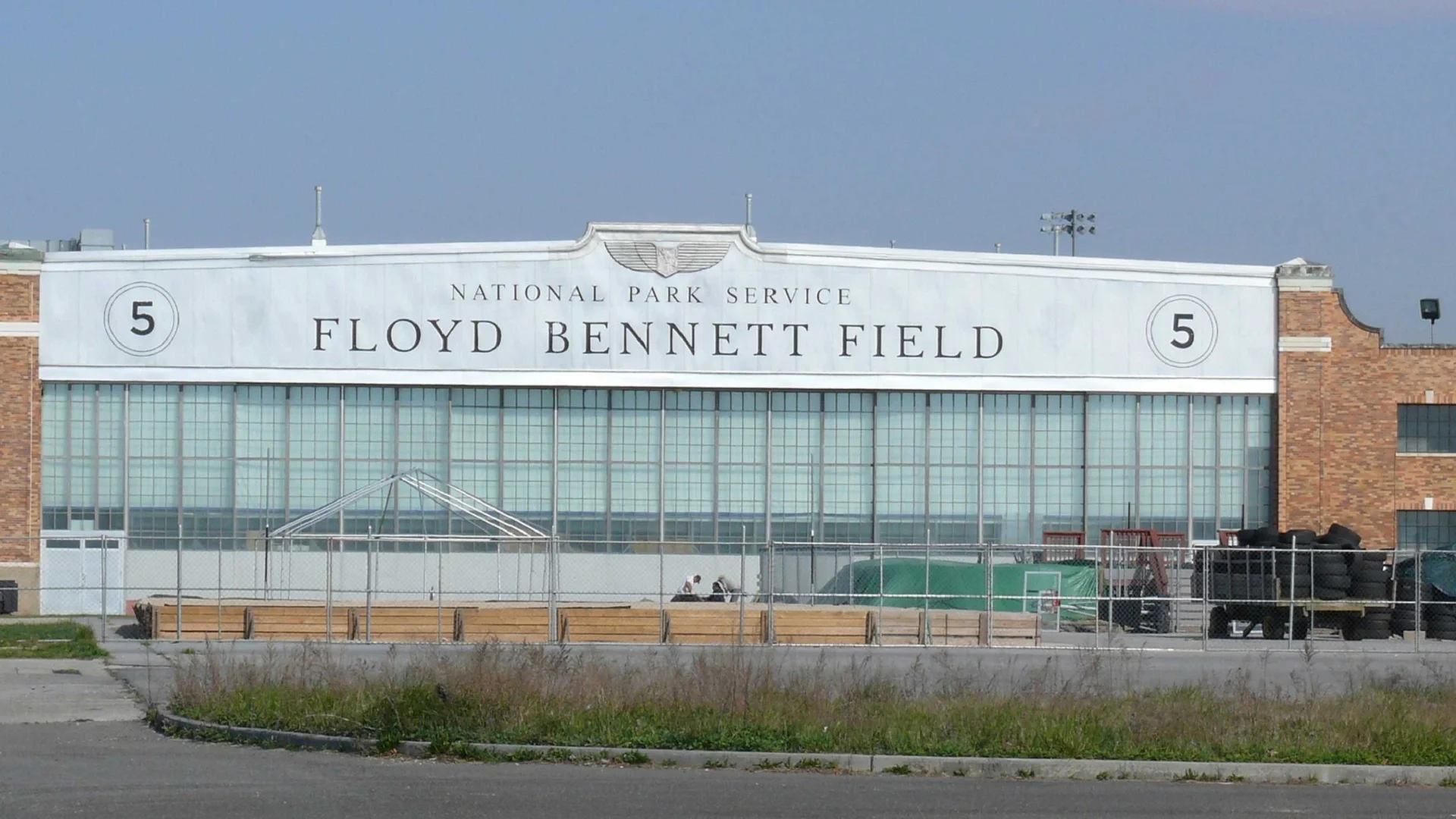Although it did not become a major commercial airport, Floyd Bennett Field played an important role in general aviation and military operations. In the years before World War II, it attracted record-breaking pilots attempting long-distance flights and hosted competitive events such as the Bendix Cup. Its importance grew during World War II when it became Naval Air Station New York, supporting Navy and Marine aviation units until its decommissioning in 1971.
Following its closure as a military base, several proposals for repurposing Floyd Bennett Field were considered. Ultimately, fixed-wing operations were ruled out because of its proximity to John F. Kennedy International Airport's busy airspace. In 1972, it was integrated into Gateway National Recreation Area under management by the National Park Service and reopened as a public park two years later.
Many original structures have been preserved and are now part of a historic district listed on the National Register of Historic Places. Today, Floyd Bennett Field is still active in various ways: it hosts a helicopter base for the New York City Police Department; portions of its runways are open for model aircraft enthusiasts; and since August 2023, it has provided temporary shelter for migrants and asylum-seekers.
The field has also become an important ecological site within New York City. After decommissioning in 1971 ended routine maintenance like mowing, natural vegetation began reclaiming large areas between runways. In 1985, restoration efforts led by the National Park Service created managed grasslands that now provide habitat for species such as Savannah Sparrows and Bobolinks.
"The airport is now considered one of the best birding locations in the city."
Looking ahead, there are plans to further revitalize Floyd Bennett Field through partnerships with organizations including Jamaica Bay-Rockaway Parks Conservancy and Science and Resilience Institute at Jamaica Bay. These plans include developing historic hangars into spaces dedicated to environmental research focused on coastal resilience.
"In September last year, the Conservancy unveiled plans for a Center for Innovation in Nature-Based Solutions and Restoration."
The new facility will focus on scientific research addressing flooding risks, biodiversity loss, urban heat increases, and other challenges facing urban environments today.
 Alerts Sign-up
Alerts Sign-up



































